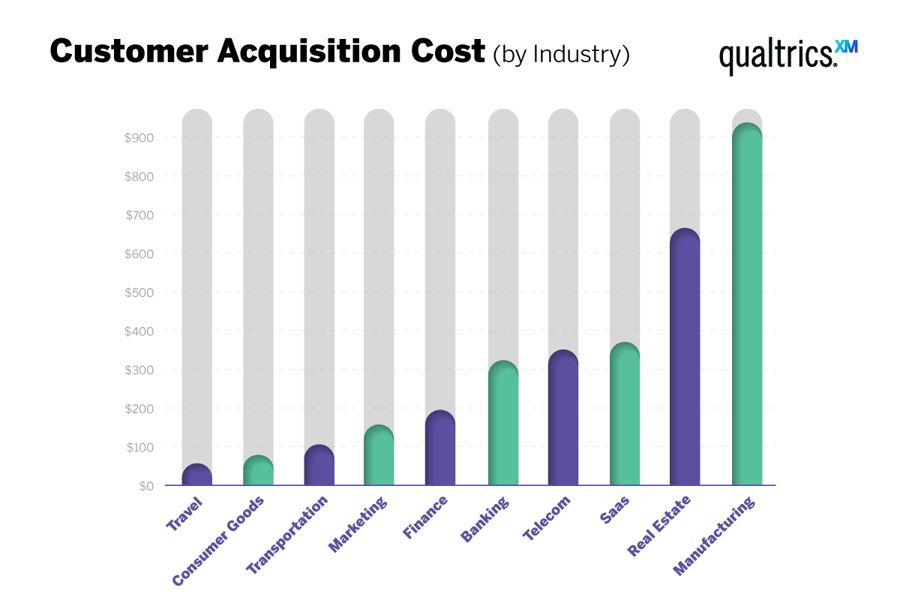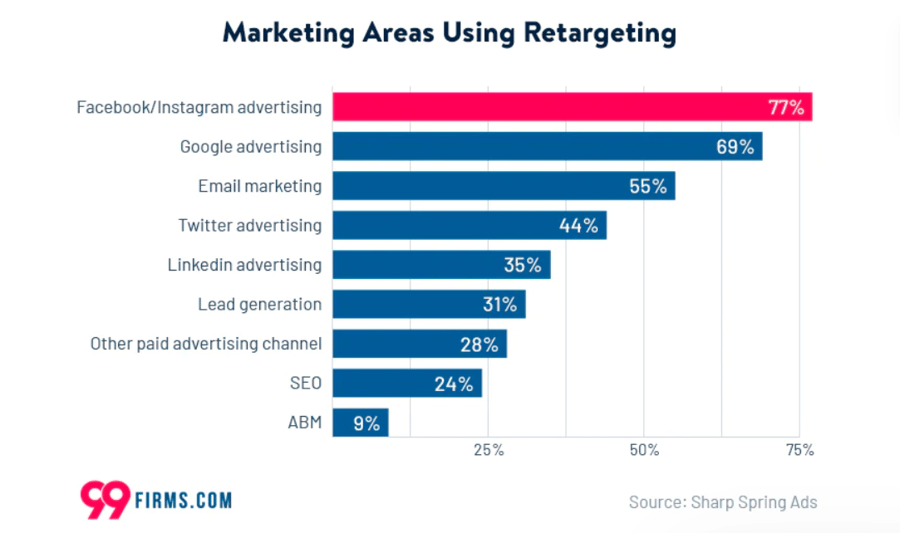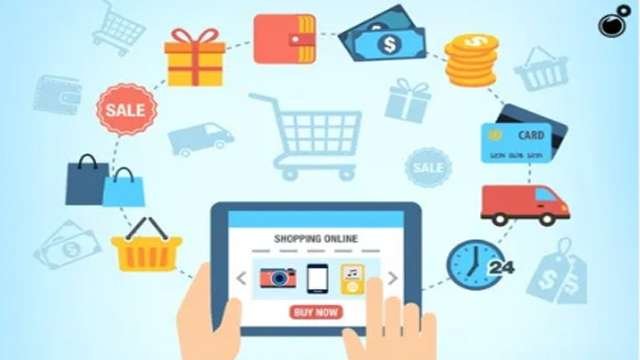When it costs more to acquire customers than they spend on your products, your margins shrink, making it harder to generate consistent profits.
Plus, continuously spending a significant portion of your revenue on customer acquisition can strain your cash flow, limiting your ability to invest in other areas of your business, such as product development or expansion.
And you’re caught in the constant struggle to acquire new customers just to replace those who churn, resulting in a never-ending cycle of high expenses.
High customer acquisition cost often means heavy reliance on paid ad channels like Google Ads and Facebook Ads. If your revenue becomes too dependent on these channels, you’re vulnerable to changes in their algorithms, policies, or costs, which can disrupt your acquisition strategy.
So, in this blog post, we’re exploring the two types of costs that eCommerce companies incur when acquiring customers, understanding why measuring CAC is important, and identifying five key steps to reduce your own.
Let’s jump in!
Types Of Costs Involved In eCommerce Customer Acquisition
There are two types of costs involved when you start riding the customer acquisition train — fundamental and discretionary costs.
Although these costs can vary depending on your specific business model and employed strategies, here’s a quick breakdown of what typically falls into each category:
Fundamental Costs
Fundamental costs are essential expenses that are, you guessed it, fundamental to the core operations of your eCommerce business.
So, if you choose to reduce these costs, it’d negatively impact the quality of your service or the customer experience.
For example:
- Domain name buying cost
- Website setup, hosting, and maintenance expenses (which, if cut, can lead to downtime and security issues)
- Inventory procurement (reducing this may cause stockouts and increased bounce rate)
- Payment processing fees
Discretionary Costs
Discretionary costs refer to expenses that can be reduced or replaced with more cost-effective alternatives without compromising the fundamental operations of your business. Identifying and managing these costs can lead to increased profitability.
For example, a newly launched eCommerce startup does not require a full-time contact center operation. You can outsource it to a third-party service provider. Also, you can save your call center expenses, which can cost thousands of dollars, with a cloud phone system that is relatively much cheaper.
How To Calculate Customer Acquisition Cost (CAC)
CAC is calculated by dividing the total cost of acquiring customers (including discretionary costs) over a specific period by the number of customers acquired during that period.
This metric provides insight into the efficiency of your customer acquisition efforts, helping you assess whether your investments in marketing and sales are yielding positive returns.

Source: Qualtrics
Plus, CAC should ideally be lower than the lifetime value (LTV) of a customer to ensure profitability in the long run.
You should also consider all relevant costs, including operational expenses like office space and staffing, to arrive at an accurate CAC figure.
Why You Need To Measure Customer Acquisition Cost (CAC)
CAC is part of every conversation that a business has with its investors. It’s part of your business plan, investor meeting, and shareholder reports. This is because the cost to acquire a customer directly impacts your product’s competitiveness, business profitability, and scalability.
Performance Evaluation Over Time
CAC allows you to assess how your customer acquisition efforts perform over different periods.
By tracking CAC over months or years, you can identify trends and determine whether your acquisition costs increase or decrease. This information is critical for making data-driven decisions to optimize your marketing strategies.
Benchmarking Against Industry Standards
CAC provides a basis for comparing your business’s customer acquisition efficiency with industry benchmarks or competitors.
Understanding how your CAC compares to others in your sector can help you identify areas where you may need to improve or are already doing well.
Identifying Strengths and Weaknesses
Investors use CAC as a key metric to assess the scalability and sustainability of a business model.
Why? A low CAC relative to the CLTV can indicate the strength of your brand and the efficiency of your marketing and sales processes.
6 Steps To Reduce Your Customer Acquisition Cost (CAC)
Now that you understand what customer acquisition cost is and why it’s important to measure it, let’s dive into how you can reduce it.
1. Break Down Your Costs
To cut down on your CAC, start by dividing expenses into two groups:
- Things you can replace with cheaper options (discretionary)
- Things you can’t replace because they’re core to your operations (non-discretionary)
By making this distinction, you can save money without compromising crucial aspects. This can ensure you stay at least at a break-even stage and later become profitable and even an investible business in the eyes of VCs.
2. Look For Alternatives
Business is all about extracting margins from every single functional element.
So, looking for more affordable alternatives to replace the existing discretionary and fundamental elements helps you reduce CAC.
For example, when it comes to:
Hosting Services
- Explore different hosting providers that offer competitive pricing while maintaining the necessary performance and security levels.
- Consider cloud hosting options, as they often allow you to scale resources up or down based on your traffic, potentially reducing costs during slower periods.
- Optimize your website and use content delivery networks (CDNs) to improve loading times and reduce the need for expensive hosting resources.
Shipping And Fulfillment
- Negotiate shipping rates with multiple carriers to secure the best deals.
- Explore fulfillment centers that offer competitive rates and can streamline your order processing.
Customer Support
- Utilize chatbots, a knowledge base, and AI-powered customer support solutions to handle routine inquiries, reducing the need for extensive human support teams.
- Consider outsourcing customer support to regions with lower labor costs.
- Hire a remote team to save costs on office space.
3. Work Out Opportunity Costs For Discretionary Spending
Working out opportunity costs helps you prioritize investments and resources, considering the trade-offs between different options and maximizing the overall benefit to your business.
It encourages you to evaluate not only the direct costs of a decision but also the potential benefits that may be lost by not choosing an alternative course of action.
For example:
- Evaluate whether replacing your investment in Google Ads with a comprehensive branding campaign could attract more loyal, long-term customers. According to Scott Chow from The Blog Starter, this shift in strategy may yield higher retention rates and reduce CAC in the long run.
- Determine whether allocating resources to content marketing efforts is more beneficial than focusing on YouTube marketing.
- Explore opportunities to replace some business processes with AI. Consider automating customer support or optimizing inventory management with AI-driven solutions.
A practical approach to making these decisions is allocating a portion of your budget to A/B testing campaigns. These campaigns generate valuable data to help you implement long-term strategies cost-effectively.
4. Have A Long-Term Horizon For Planning
By investing in strategies that may not provide immediate returns but have the potential for substantial long-term benefits, you can strategically position your business for sustainable, explosive growth.
Here’s how you can approach this:
- Understand that certain marketing strategies, such as SEO or branding campaigns, may not yield immediate results. These strategies often require a significant upfront investment and time to build momentum. Be prepared for the fact that the ROI may be low or even negative in the initial months.
- Understand that it takes time for customers to develop trust in your brand and become repeat buyers. Branding campaigns aim to create strong brand loyalty and recognition. Continue reinforcing your brand message and values throughout the long-term campaign(s).
- When assessing the ROI of long-term campaigns, consider the CLV of acquired customers. While the upfront acquisition cost may seem high, if these customers become loyal and make repeated purchases over time, the overall value they bring to your business can be significant.
To zero in on the best long-term marketing strategies, you need to collaborate with your key team members.
You can use an online whiteboard to make this easier, as it allows for remote collaboration, visual thinking, and real-time idea generation, with the ability to capture, save, and integrate ideas into your workflow.
The better structured your brainstorming, prioritization, time management, and follow-up are, the more productive sessions you can have. This collaborative approach helps leverage collective creativity and expertise.
5. Implement Repeat-Buying Strategies
By getting customers hooked to your brand and compelling them to keep coming back to you to buy, you can not only reduce your CAC but also maximize the value of your existing customer base.
And it doesn’t need to be stated that retaining loyal customers is often more cost-effective than constantly acquiring new ones.
A few repeat-buying strategies that you can employ include:
- Offer subscription box services where customers can subscribe to receive products regularly. This not only secures recurring revenue but also creates a loyal customer base.
- Analyze your customers’ purchase behavior to identify buying cycles. For instance, if you sell skincare products, customers may restock every two months. Use this information to time your promotions accordingly.
- Reward your repeat customers with a loyalty program. Offer points for each purchase, which can be redeemed for discounts, free products, or exclusive access to sales.
- Provide personalized product recommendations to customers based on their past purchases and browsing history. You can utilize data and AI to make this easier. Personalization increases the chances of them buying again.
- Recommend complementary or upgraded products when customers make a purchase. For example, if someone buys a camera, suggest additional lenses or accessories.
- Send automated reminders when it’s time for customers to reorder, especially for consumable and perishable products. This is effective for products like cosmetics, medicines, or pet supplies.
- Implement retargeting ads to target previous website visitors with tailored ads. This is a great way to remind them of your products and encourage them to return and purchase.

Source: XgenTech
6. Track And Repeat
What gets measured can be improved.
So, regardless of the campaigns and channels you leverage to reduce your CAC, you can further optimize them — because there is always room for improvement.
You must differentiate between successful and unsuccessful strategies. This can involve A/B testing different marketing channels, ad creatives, landing pages, or targeting options. By understanding what doesn’t work, you can reallocate resources to more effective strategies.
For some marketing efforts, especially those aimed at building brand awareness and customer loyalty, measuring performance over more extended time frames is essential.
For example, the impact of content marketing or email campaigns might not be immediately apparent but can yield significant results over time.
PPC campaigns are often focused on immediate results. These campaigns should be tracked over smaller time frames to assess their effectiveness quickly. And this can tell you whether it’s the right medium to lower your CAC.
Based on the data and insights gathered from tracking, make necessary adjustments. These tweaks might involve refining ad targeting, changing ad copy, adjusting bidding strategies, or experimenting with new marketing channels. After making changes, repeat the process of tracking, evaluating, and tweaking.
Wrapping Up
If you implement the strategies mentioned above, you’ll lower your CAC, period.
With lower CAC, you can offer more competitive pricing or invest in improving your products and services. This can give you an edge over competitors and attract price-sensitive customers.
As you expand, you can continue to acquire customers at a reasonable cost, ensuring that your growth is sustainable and profitable.
Which particular overhead are you going to optimize first? Let us know in the comments below.
Post Disclaimer
The information provided in our posts or blogs are for educational and informative purposes only. We do not guarantee the accuracy, completeness or suitability of the information. We do not provide financial or investment advice. Readers should always seek professional advice before making any financial or investment decisions based on the information provided in our content. We will not be held responsible for any losses, damages or consequences that may arise from relying on the information provided in our content.



